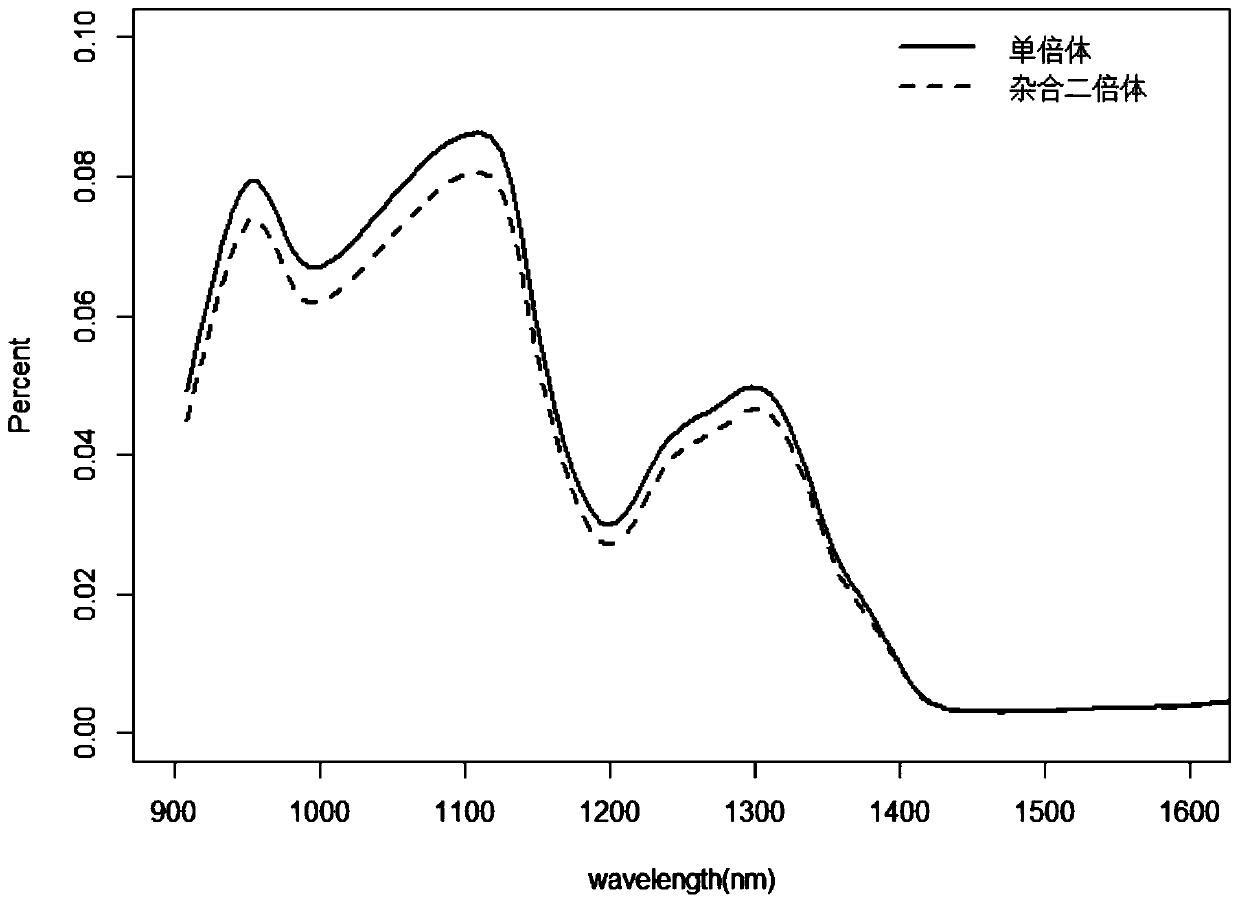A method for distinguishing maize haploid
A haploid, maize technology, applied in the directions of botanical equipment and methods, instruments, plant genetic improvement, etc., can solve problems such as applicability limitations, and achieve the effect of simplifying the identification steps
- Summary
- Abstract
- Description
- Claims
- Application Information
AI Technical Summary
Problems solved by technology
Method used
Image
Examples
Embodiment 1
[0045] Embodiment 1, the preparation of hybrid population
[0046] 1. Preparation of DH series
[0047] 1. Maize inbred line Qi 319 (female parent) was crossed with corn inbred line Chang 7-2 (male parent) to obtain hybrid offspring (grain).
[0048] 2. The hybrid progeny (plant) obtained in step 1 is used as the female parent, and is crossed with the induced line CAU5 as the male parent to obtain the hybrid progeny (grain).
[0049] 3. Select pseudo-haploids from the hybrid offspring (grains) obtained in step 2, and perform haploid doubling to obtain 107 DH lines. Named successively as DH series 1 to DH series 107.
[0050] 2. Preparation of Hybrid Population A
[0051] Each DH line obtained in step 1 is used as the female parent, and the induced line CHOI3 is used as the male parent to perform hybridization to obtain hybrid offspring (grains). 30-40 pseudo-haploids and n1 (n1=10 or 0) pseudo-diploids were randomly selected from the hybrid offspring (grain) obtained from ...
Embodiment 2
[0063] Embodiment 2, establishing a model to identify haploids by collecting infrared spectra
[0064] 1. Grain near-infrared transmission spectrum acquisition
[0065] Each grain in the hybrid population A prepared in Example 1, the hybrid population B prepared in Example 1, and the hybrid population C prepared in Example 1 was respectively subjected to near-infrared transmission spectrum scanning (the embryo surface of the grain faces the light source, and the light source is 3 cm away from the spectrometer ). The spectrometer is a micro spectrometer MicroNIR1700 produced by JDSU Company, the spectral range is 950-1600nm, and the single measurement time is 1s. Micro spectrometer MicroNIR1700 collects near-infrared transmission spectrum absorption values at 125 specific wavelengths in the spectral range 950-1600nm.
[0066] 2. Authenticity Identification of Pseudo-Haploid and Pseudo-Diploid
[0067] After step 1 is completed, each seed in the hybrid population A prepared...
PUM
 Login to View More
Login to View More Abstract
Description
Claims
Application Information
 Login to View More
Login to View More - R&D
- Intellectual Property
- Life Sciences
- Materials
- Tech Scout
- Unparalleled Data Quality
- Higher Quality Content
- 60% Fewer Hallucinations
Browse by: Latest US Patents, China's latest patents, Technical Efficacy Thesaurus, Application Domain, Technology Topic, Popular Technical Reports.
© 2025 PatSnap. All rights reserved.Legal|Privacy policy|Modern Slavery Act Transparency Statement|Sitemap|About US| Contact US: help@patsnap.com



